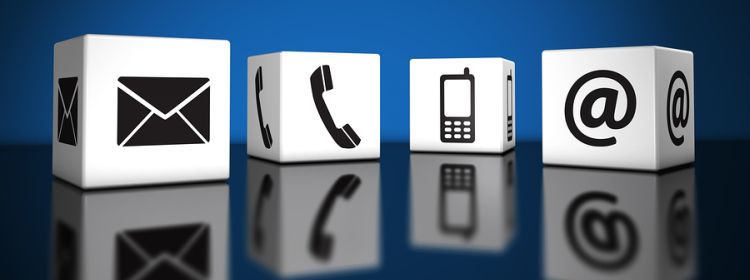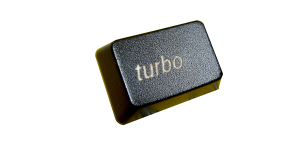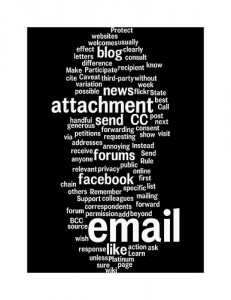
Sales can be made in several ways: face-to-face, over the phone, web-based, direct mail or via e-mail. With the plethora of internet businesses now transacting sales online you’d be forgiven for thinking that you could dispense with sales people all together but in many instances you would be incorrect. There are very few businesses that can run purely on the internet with no sales people interaction required. At the very least these online businesses need customer service or ‘live chat’ enquiry centres where customers queries, complaints and comments can be addressed effectively. How well these business execute this function it critical to their ongoing success. For other businesses that deal in face-to-face and telephone sales how you deal with web leads and use email is incredibly important to keeping sales opportunities rolling in. Sometimes sales opportunities come in from different time zones and overseas or some customers may work night-shift and require additional communication options by other means. Almost all businesses are now in a position to provide customers and prospective customers with the chance to engage with them via a web request or email. How quickly and how well you respond to these requests is becoming increasingly important to attracting and retaining your customer base. Take for instance the retail car sales: many dealerships have their own websites now or places on the car sales sites where prospective customers can request information etc. If the sales people from those car dealerships do not follow up within 1-2 hours the lead goes cold. Gone. Lost.
The prospective customer has moved on to another dealership. Respond fast to web leads If you are not in a purely online business then ideally you would respond to a web sales lead as fast as possible (immediately when possible). If appropriate our first tip would be to call the customer first (assuming they left a phone number). If they are not there leave a specific message stating why you are calling and your contact number. Then follow up with an email stating the same and leaving a contact number. While it is easier to return emails than phoning someone the only time we would suggest emailing in place of phoning first is if the customer is operating in a different time-zone and it is not appropriate to call them in your work hours. In your email you should see if you can arrange for a mutually suitable time you can both speak. How to use and not to use email E-mail is a medium of communication that can be used to overcome some of the challenges in dealing with customers where face to face contact is extremely difficult or as a supplement to your regular sales activities. However, you should not expect email to become your main selling portal. Why? Well how long does it take to write a well crafted, well intentioned, unambiguous email? Answer: a very long time. If you have the chance to speak to the person via phone to progress the sales or initiative contact then pick up the phone. You will get where you need to go much more quickly than relying on e-mail by itself.
Tips for using e-mail.
- In sales, ideally, you use email to confirm details of meetings times, overview of a discussion, facts, meeting agendas. Do not try to use emails to convey emotional topics or difficult issues as too many things can be misread or misinterpreted in an email leaving you worse off than you were before.
- Emails are effective for setting up an agenda prior to a client meeting. (see our article on setting the sale agenda)
- Write your emails in a way that it makes sense to someone who does not know you. Put things in context, spell out acronyms.
- Be both friendly and professional via email, even with people you know well. Have a greeting (‘Hi xxx’ or ‘Hello xxx’ or ‘Dear xxx’ if it is really formal), and a sign off (‘Kind regards’ or ‘Cheers’ or ‘Sincerely’).
- The subject line needs to be short, clear and specific which helps your receiver make a prioritised decision.
- Spell-check and proof-read emails before sending.
- Keep it short. Long emails don’t get read. Most people don’t realise this and spend a lot of time crafting lengthy emails when a simple, to the point email is better. It is much harder to say what you have to say in a few sentences but your messages will be much more effective if you can master a shorter email. All paragraphs should be less than four lines long and use bullet points whenever possible.
- If you send an attachment, let people how long it will take to read it.
- Watch for formatting issues. Use simple text that translates well into any email system. If you are writing an email in MS Outlook, remember that the formatting options available to you are not available to many others who receive emails. So try to write the emails in plain text. Use a “*” rather than a formatted bullet. And watch for funny symbols, different font use, color use, or curly “smart” quotes.
- Copy in the person who gave you an introduction or referral. This does two things: It keeps the referral partner in the loop. Since the referral partner will probably be a key circle of influence, you want to ensure that person is aware of what you are doing. It legitimizes you to the customer. You really did get an intro from the referral partner — and you are proving it by the CC.
- NEVER put anything in an email that you would not say to someone in person. Never put anything that may incriminate you or anyone else in an email. It is a legal document and can be used in a court of law.
- Keep your signature relevant. Use your signature box to convey your company’s clear message; your contact details, your brand, your social media connections (Facebook, Linkedin, Twitter, etc.). It is all adverting real estate.
- You can also attach a vCard. vCards are very useful. A vCard is a file format standard for electronic business cards. A vCard (usually a .vcf file) is an attached contact file that is compatible with many contact management systems like MS Outlook: Mail. vCards carry contact information and you can also have them carry a marketing message.
We hope this helps you use email effectively when selling. Remember everybody lives by selling something. Author: Sue Barrett, www.barrett.com.au




New Article Email Notification